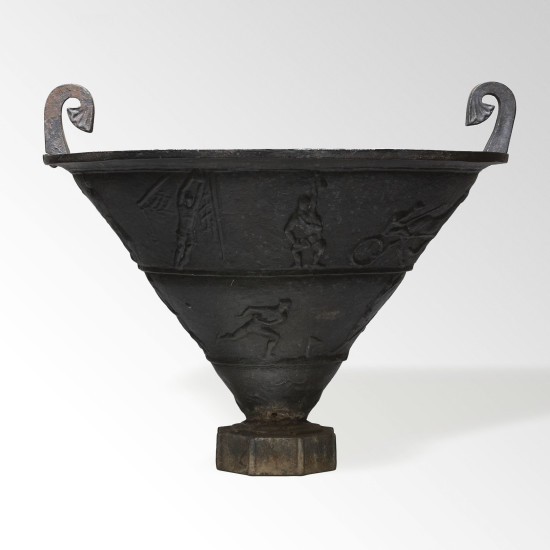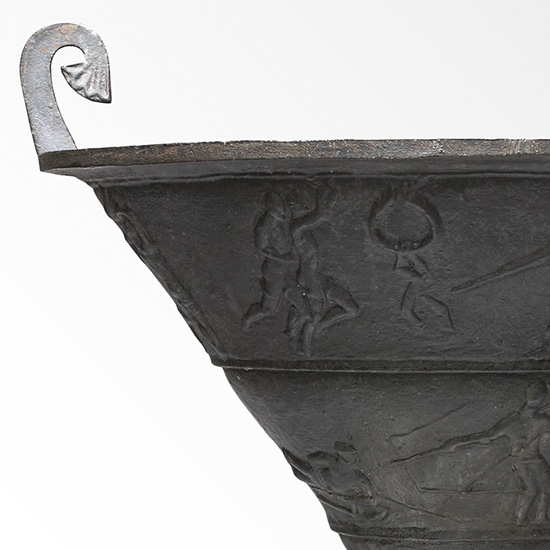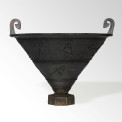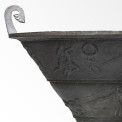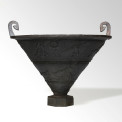“Sporturnan” pair in cast iron designed by Rolf Bolin
Näfveqvarns Bruk
Pair “Sporturnan”
Relief of various sports in registers
Upturned acanthus handles
Painted cast iron
Sweden, 1920s
Foundry name in relief
Dimensions:
19 in. (48 cm) H with handles
16 in. (41 cm) H urn
22.5 in. (57 cm) D
|
The “artistic production” of the Näfveqvarns Foundry of the interwar period stands out as some of the most distinctive manifestations of the “Modern Classicism” style dominating architecture and design in Sweden.Relegated to producing utilitarian pieces in an increasingly old-fashioned medium, the nearly three century old foundry was revitalized when Danish engineer Alfred Dybsö became its general manager in 1911. Technically proficient, Dybsö began enacting a number of technical developments, including a chemical treatment that facilitated the casting of relief work.
By the early 20th century, cast iron was generally considered an old-fashioned medium best relegated to mundane applications like lamp posts. In the 1910s, the Näfveqvarns Foundry of Sweden , which had been casting iron for hundreds of years, was now headed by a dynamic new director that invigorated its production with new techniques and models that, against the odds, managed to make cast iron chic again. In 1912, Näfveqvarns collaborated with the Swedish Society of Craft and Industrial Design (a body founded in the nineteenth century to improve design standards in Swedish industry) on a competition that opened the design of new models to outside talent. Soon a number of the era’s rising talents, such as architects Folke Bensow, Gunnar Asplund, Uno Åhrén and Carl Hörvik, and sculptors, such as Ivar Johnson, Anna Petrus, and Erik Grate, were designing furniture, decorative plaques, urns and other pieces for the Foundry. The partnership with these artists resulted in some of the most iconic and original examples of the “Modern Classicism” aesthetic that dominated Swedish design in the 1920s. A sleek and lyrical take on the classical tradition, the style took its cues from the various forms of classical revival that had been popular in Sweden since the late 18th century, rationalizing and rearranging them, adding a fair share of Art Moderne sensibilities in the process. Through publications and exhibitions, Näfveqvarns garnered international acclaim, with models displayed at Hemutställningen in 1917, the Jubilee Exhibition in Gothenburg in 1923, the Paris Exposition of 1925, as well as a follow-up exhibit at the Metropolitan Museum of Art in the same year. In Paris, Näfveqvarns designs were on prominent display within and around Carl Bergsten’s Swedish National Pavilion (above right photo). The “Sporturnan” was given particular pride of place, displayed on columns placed on either side of the building’s portico. Rolf Bolin (1895-1933) worked in the office of Lars Israel Wahlman before opening his own architectural firm. He designed several residential buildings in the Modern Classicism style in Stockholm in the 1920s. Literature: |
VIEW INVENTORY PAGE
